Nvidia GTX 1070 SLI vs Titan X Pascal – 22 Games Tested Plus Synthetic Benchmarks

The GeForce GTX 1070 is the second graphics card based on Nvidia’s latest Pascal architecture following the powerful GTX 1080. It is a great card that delivers a significant performance increase over the last-gen products at a reasonable price point. In this post, we take a look at how two of these cards in SLI stack up against the the fastest GPU on the planet, the Titan X Pascal. Can the GTX 1070 SLI reach the performance level of the Titan X? Let’s find out.
Nvidia GTX 1070 SLI vs Titan X Pascal Performance Comparison
Based on the 16nm FinFET Pascal architecture, Nvidia Titan X is the fastest consumer GPU available on the market right now. It is around 60% faster than the last-gen GTX Titan X Maxwell and 20-30% faster than the latest GTX 1080. The card features 11 TFLOPs of FP32 and 44 TOPs of INT8 making it well-suited for neural networks and machine learning.
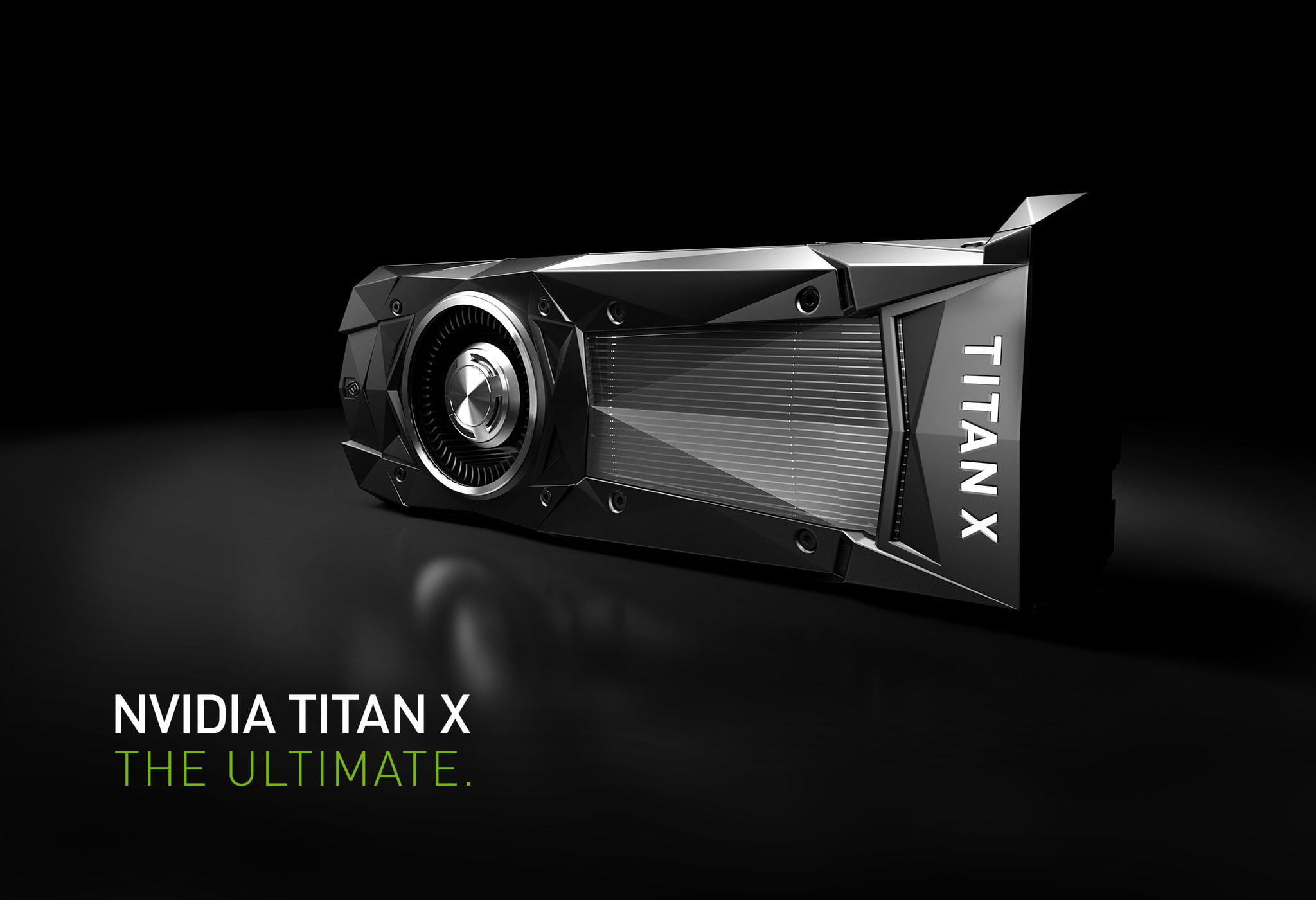
But, with great performance comes a premium price tag. The Titan X Pascal is priced at a whopping $1200 which is $350 more expensive than spending approximately $850 on the GeForce GTX 1070 SLI. This includes cost of two GTX 1070s at around $400 each plus $40 for an HB SLI bridge.
In terms of performance, the Titan X is around 25-40% faster than a single GTX 1070 so it should be interesting to see how this graphics beast fares against two 1070 cards in SLI where the latter is the “value” solution.
That being said, it’s worth mentioning that a single powerful GPU generally has advantages over SLI solutions; it’s often perceived as “smoother,” and the user never has to worry about deviation from ideal scaling that could deteriorate the expected results.
The GTX 1070 SLI versus Titan X benchmarks come from our friend Elric over at Tech of Tomorrow. Elric tested 22 games however, some DirectX 12 games were tested in DirectX 11 and that’s because they didn’t show any type of scaling at all in the latest graphics API.
Test Configuration
- Intel Core i7-6700K – Core clock of 4.0GHz with HyperThreading and Turbo boost on to 4.4GHz
- ASRock Z7170M OC Formula motherboard based on Intel Z7170 chipset
- G.Skill Ripjaws V 16GB DDR4
- Nvidia’s GeForce 372.70 Drivers
- Windows 10 64-bit Home Edition
- Nvidia GTX 1070 SLI vs TITAN X Benchmarks
Nvidia GTX 1070 SLI vs TITAN X Benchmarks
3DMark FireStrike

Time Spy – DX12
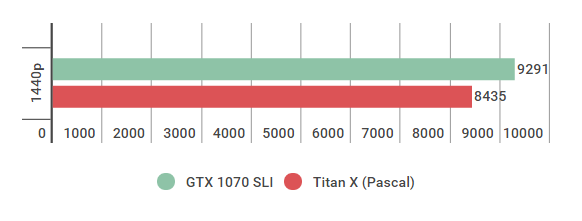
Crysis 3 – 2013 DX11
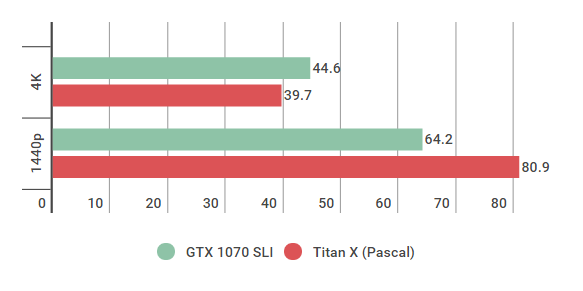
Metro: Last Light Redux – 2014 DX11

Middle Earth: Shadows of Mordor – 2014 DX11

Alien Isolation – 2014 DX11

Dragon’s Age: Inquisition – 2014 DX11

Dying Light – 2015 DX11

Grand Theft Auto V – 2015 DX11
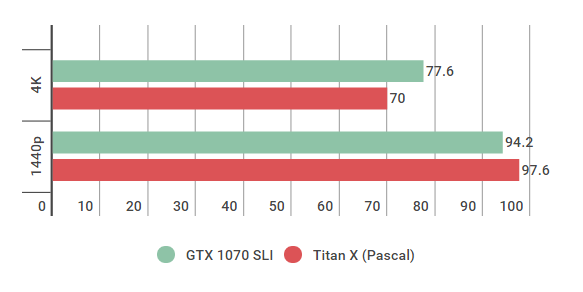
The Witcher 3 – 2015 DX11

Batman: Arkham Knight – 2015 DX11

Fallout 4 – 2015 DX11
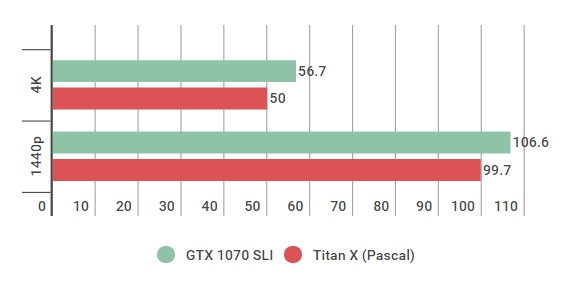
Star Wars: Battlefront – 2015 DX11

Assassin’s Creed Syndicate – 2015 DX11

Just Cause 3 – 2015 DX11

Rainbow 6 Siege – 2015 DX11

DiRT Rally – 2015 DX11

Far Cry Primal – 2016 DX11

Tom Clancy’s The Division – 2016 DX11

Mirror’s Edge Catalyst – 2016 DX11

Deus Ex Mankind Divided – 2016 DX11

Hitman – 2016 DX12

Rise of the Tomb Raider – 2016 DX11

Ashes of the Singularity – 2016 DX12

There you have it. As you can see above when SLI scales well, it delivers a solid performance and even beats the Pascal version of the Titan X in many games. And it’s clear from the benchmark results that the GTX 1070 SLI scales very well. Obviously, not every game out there is going to scale and that’s one of the things why they recommended to buy the absolute best card that you can if you have the money.
The DirectX 12 games appear to have more issues with multi-GPU scaling than those on DX11; the only title where DX12 is faster is Ashes of the Singularity. That’s because not everything in DX12 has caught up so we’re not seeing great scaling across the board with that yet. But, as drivers change in DX12 matures, we can expect to see much better results in SLI all the way across the board.
Conclusion
So the question is, which graphics solution is suitable for you? Is it the $1200 Titan X Pascal or the $850 GTX 1070 SLI? Well the Titan X did perform extraordinarily versus two upper-midrange GPUs. The card is certainly expensive but it’s ideal for 4K and possibly the only consumer video card that could handle maxed out settings at that extreme resolution. The GTX 1070 SLI offers a similar level of performance but power usage and noise will be higher with it compared to the Titan X(P).
In short, if you want the fastest single GPU available today so that you could play the very latest games as soon as they are released, the Titan X may be the best choice for you. But not everyone can afford to splash out $1200 for a graphics card. In that case if you don’t mind waiting for an SLI profile then the GTX 1070 SLI is the way to go for you.